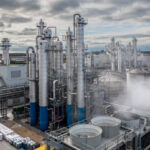Introduction
In an increasingly digitized and competitive business landscape, companies are adopting intelligent technologies to boost efficiency, cut operational costs, and enhance customer satisfaction. Among these transformative tools, RPA services have emerged as a powerful solution that automates repetitive, rule-based tasks across departments. However, to justify investment and ensure continuous improvement, businesses must effectively measure the Return on Investment (ROI) of RPA initiatives.
This article explores key performance indicators (KPIs), how to calculate RPA ROI, and the long-term strategic benefits that Robotic Process Automation services offer.
Understanding ROI in the Context of RPA
ROI is a standard metric used to evaluate the profitability of an investment. In the case of RPA, it refers to the tangible and intangible benefits gained from deploying bots versus the total cost of ownership (TCO). Calculating the ROI of Robotic Process Automation services involves assessing cost savings, productivity gains, error reduction, and time saved.
Costs Include:
- Bot development and deployment
- Licensing and subscription fees
- Infrastructure or cloud expenses
- Support and maintenance
- Training and change management
Benefits Include:
- Labor cost savings
- Time savings (process cycle time reduction)
- Error reduction (fewer compliance risks)
- Increased process throughput
- Enhanced scalability and agility
Key KPIs for Measuring RPA ROI
To effectively assess the performance of RPA projects, organizations should focus on both financial and operational KPIs. These indicators provide quantitative data that help demonstrate RPA’s value over time.
1. Process Cycle Time Reduction
This KPI measures how much faster a process is completed using automation compared to manual execution. For example, if an invoice approval took 2 hours manually and now takes 15 minutes with a bot, the reduction is substantial.
2. Accuracy and Error Rate
One of the greatest advantages of RPA is its ability to minimize human errors. Lower error rates result in fewer reworks, compliance violations, and customer complaints—factors that directly impact costs and brand reputation.
3. Full-Time Equivalent (FTE) Savings
This measures how many human hours or roles are replaced or supplemented by bots. For instance, if a bot performs tasks equivalent to the workload of three full-time employees, the labor cost savings can be clearly quantified.
4. Bot Utilization Rate
This metric tracks how efficiently the bots are being used. A bot operating at 90% of its capacity is providing greater ROI than one utilized only 30% of the time.
5. Scalability Index
How easily can you scale RPA across other processes or departments? A high scalability index reflects the versatility and long-term sustainability of your RPA platform.
6. Compliance Improvement Metrics
RPA ensures standardized execution of tasks, making audits smoother and reducing non-compliance risks. Monitoring reductions in audit findings or penalties helps measure this benefit.
7. Customer and Employee Satisfaction
Indirect but powerful, these KPIs are linked to how automation frees up time for employees to focus on high-value work and how faster services enhance the customer experience.
Short-Term Gains vs. Long-Term Strategic Benefits
While immediate gains in cost and time savings are measurable, the long-term benefits of Robotic Process Automation services are often more transformational:
1. Increased Agility and Adaptability
Organizations with RPA in place can adapt more quickly to market shifts and compliance changes. This agility becomes a competitive edge in uncertain times.
2. Higher Employee Productivity
RPA doesn’t replace human workers; it enables them to focus on creative, strategic, and decision-making tasks. Over time, this leads to a more engaged and productive workforce.
3. Continuous Process Improvement
With data-rich dashboards and audit trails, RPA provides insights into inefficiencies that can be improved iteratively, creating a culture of operational excellence.
4. Better Customer Experience
Automated systems process requests, payments, and responses faster, leading to quicker turnaround times and higher customer satisfaction.
5. Competitive Differentiation
Companies that automate intelligently often outperform their competitors in terms of speed, accuracy, and scalability.
How to Build a ROI-Focused RPA Strategy
To truly capitalize on the power of Robotic Process Automation services, businesses need a strategy centered on measurable outcomes. Here’s a roadmap to building such a strategy:
1. Identify High-Impact Processes
Begin with processes that are rule-based, repetitive, high-volume, and prone to error—such as data entry, invoice processing, or customer onboarding.
2. Set Baseline Metrics
Measure the current performance of selected processes. This creates a benchmark against which improvements can be compared post-RPA deployment.
3. Use Pilot Projects
Start small with a pilot to validate feasibility and calculate early ROI. Use lessons from the pilot to scale RPA more confidently across the organization.
4. Monitor and Adjust
Use real-time dashboards and analytics to monitor performance KPIs. Adjust bot logic and workflows based on this feedback to continuously improve outcomes.
5. Engage Stakeholders
Ensure IT, operations, compliance, and end-users are aligned on goals, processes, and expectations. ROI improves when RPA is a company-wide initiative, not an isolated tech project.
Real-World Example: ROI in Action
Consider a mid-sized insurance company that implemented Robotic Process Automation services to automate claims processing. Before automation, agents manually validated policyholder data, resulting in processing times of up to 72 hours.
After deploying RPA bots:
- Processing time dropped to less than 8 hours.
- Accuracy improved by 90%.
- Employee satisfaction increased due to reduced data handling.
- The company saved $300,000 annually in labor costs.
- ROI within the first year reached over 250%.
Conclusion
Measuring the ROI of Robotic Process Automation services is crucial for justifying the investment and driving future adoption. While the immediate cost savings and productivity boosts are clear, the true power of RPA lies in its long-term benefits—greater agility, improved compliance, enhanced employee engagement, and superior customer experiences.
By establishing clear KPIs and aligning RPA efforts with business goals, organizations can transform automation from a tactical initiative to a strategic asset that delivers sustainable value year after year.












